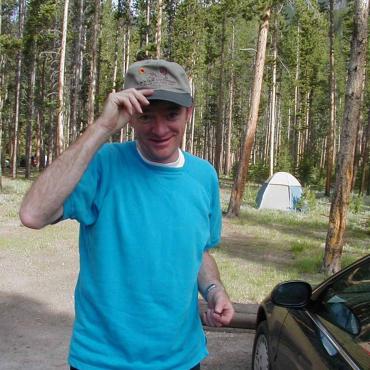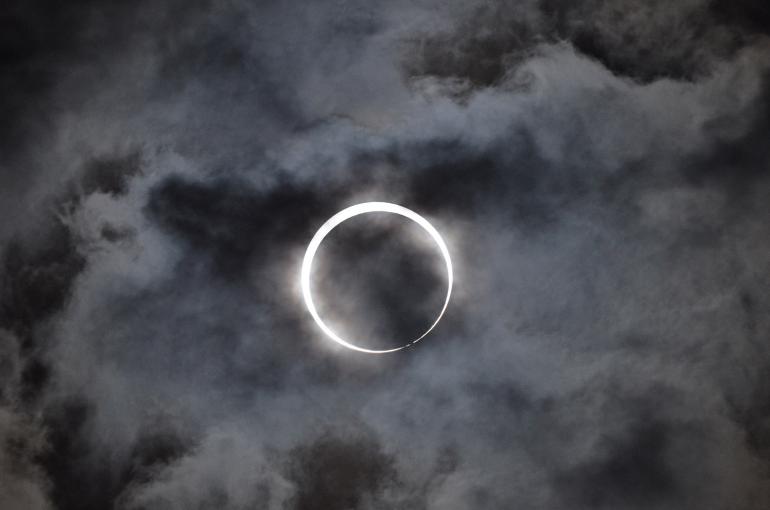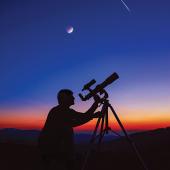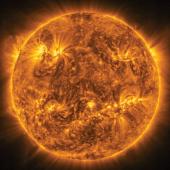Devouring the Sun
Feasting your eyes on a solar eclipse.
Our sky-watching forebears figured out pretty early in the history of human civilization that the great forces of the sky—the ones they couldn’t reach or control—got a little peckish at times. These mysterious forces weren’t above (so to speak) occasionally taking a bite out of something, and the sun and moon seemed like regular targets. Those were times to haul out the noisemakers, notch the arrows, implement the propitiations, and do whatever was necessary to discourage the diner.
Such an event is upcoming once again with the sun on the menu, and our distant ancestors could tell us a thing or two about how to chase away the offender. For their record in such matters was one of 100% success! No eclipse ever remained permanently.
We know today what causes solar eclipses, but the ancients trotted out a whole menagerie of hungry demons and beasties who they blamed for the celestial snacking.
The occasion is an annular eclipse of the sun on October 14, when the moon will pass directly in front of the sun as seen from an approximately 100-mile-wide track across North and South America. But the moon is a little too far away in space to be large enough to completely cover the sun. At mid-eclipse, it will lie silhouetted against the brilliant solar disk, leaving a ring or “annulus” of the solar disk visible. Almost all the rest of the Americas—including Montana—will see a partial eclipse of the sun, with the moon temporarily reducing the sun to a crescent shape before moving out of the way.
In Bozeman, the feast will be a breakfast—at 9:11am mountain time—when the moon will take its first nibble on the upper right-hand limb of the sun, with the sun just shyly above the horizon in the southeast. Over the next hour and change, the moon will swallow more of the sun until about 70% of the solar disk is covered at 10:28am—maximum eclipse, with the sun just a smidge further above the horizon. Then the moon will start losing its grip and slowly releasing the sun, sliding off completely by 11:52am—just in time for a lunch of your own. You can find the particulars for Bozeman, including a simulation of the eclipse, at timeanddate.com.
Whomever the perpetrator, the mortal response was usually the same: to raise a din and chase the offender away.
Remember that you should never look at the sun directly without specialized eye protection designed for solar viewing, for the sun will never be completely obscured during this eclipse and its rays can permanently damage your unprotected eyes. And never, ever, look at it through cameras, binoculars, or telescopes without a proper, special-purpose solar filter secured over the front of the optics where the light enters—or instantaneous eye damage can occur. See safety admonitions and suggestions, including sources of safe solar viewers, at solarsystem.nasa.gov. Check the local museums to see if sun-safe public viewings are planned. Also check online for planned video feeds from the path of annularity, and watch the sun turn briefly into a ring.
We know today what causes solar eclipses, but the ancients trotted out a whole menagerie of hungry demons and beasties who they blamed for the celestial snacking. The Chinese implicated a dragon, the Maya a great serpent, the Norse a ravenous wolf. In South America, it was often a jaguar or a dog. The Hungarians claimed the snacker was a giant bird; in some parts of eastern Europe, it was a werewolf; and to the Tatars of Siberia, a vampire. Some in southeast Asia blamed a hungry frog; and in Hindu lore, it was a demon named Rahu with a grudge.
Whomever the perpetrator, the mortal response was usually the same: to raise a din and chase the offender away. The Babylonians, who could predict some eclipses, prepared mitigating ceremonies; and the Ojibwe of North America shot flaming arrows into the sky to rekindle the sun’s fire. Whatever anybody tried, it always worked. The face of the sun eventually cleared, and all was well again. As it will be on October 14. If the sky is clear, enjoy the spectacle; just do so safely.
Jim Manning is the former executive director of the Astronomical Society of the Pacific. He lives in Bozeman.










